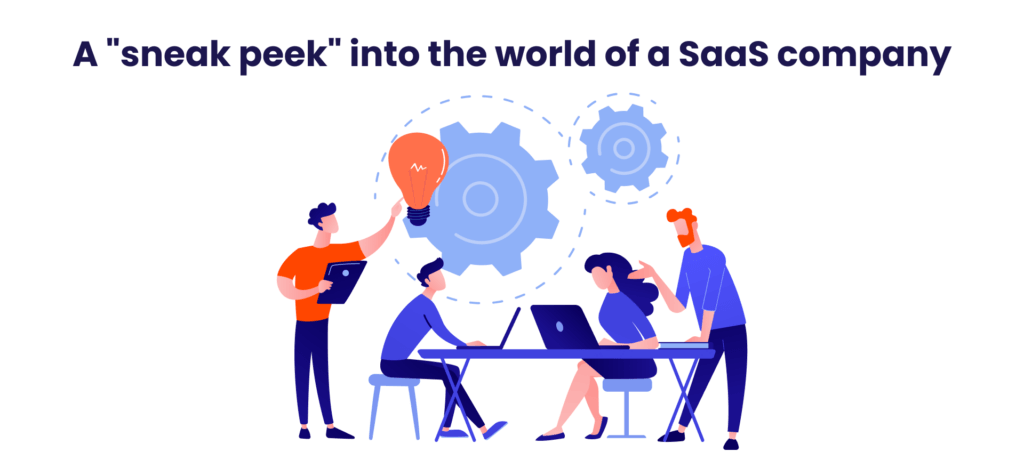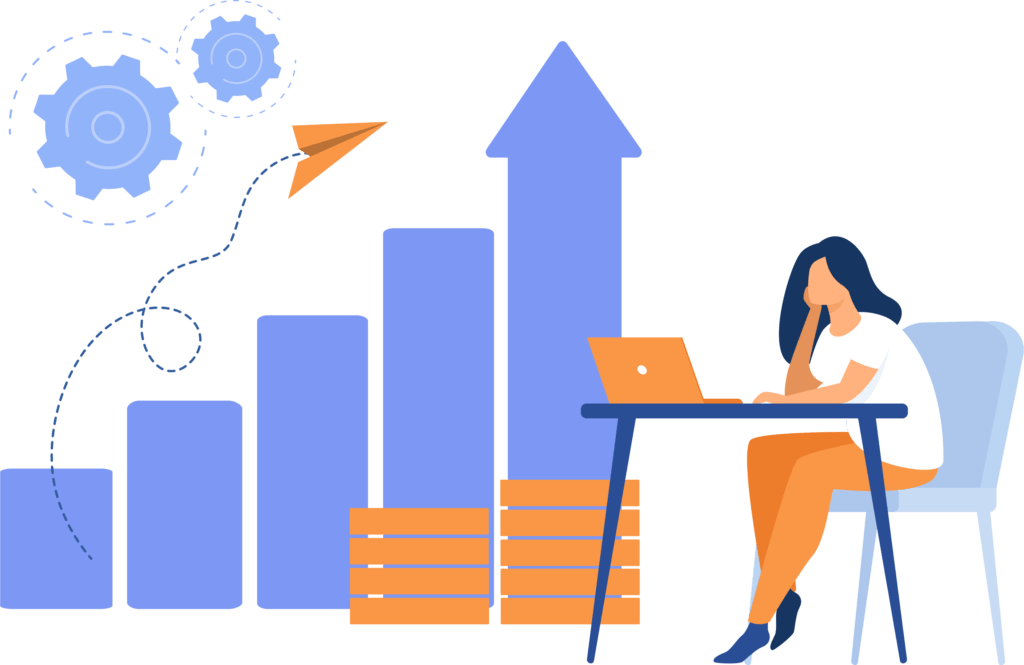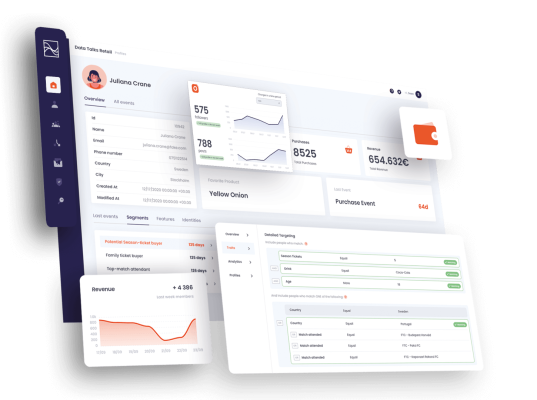
During the fall season of 2021, I got the opportunity to do my seven-week internship at the SaaS (Software as a Service) company Data Talks as part of my Digital Analytics program. It was exciting to let go of the textbooks and get out in the working life to explore analytics in action and see which parts from what we learned in school were used at this workplace.
Since the Covid pandemic was still ongoing, I did my internship remotely. As a result, this made my internship experience pretty different since I got to know the company, its atmosphere, and people just through a screen and not in person. It’s funny because you don’t really think about these small interactions when you meet people physically, such as stopping by for a quick question or just chatting for a bit. But it soon enough felt surprisingly natural with virtual morning check-ins and so on. What I also learned is that, when you work remotely, clear communication becomes even more important to ensure that everyone is on the same page when it comes to, e.g., goals, expectations, and deadlines.
Before we dive right in...
Subscribe to our blog today to ensure that you never miss valuable posts such as this one. We are passionate about helping sports organizations deliver a world-class fan experience, because better fan experience means better business. So why not use this opportunity to the fullest?

What is a CDP?
Data Talks is an international company with Swedish roots, which started its journey in 2018 and is the first Nordic certified CDP in the Nordics – a product that I was excited to learn more about.
A CDP (Customer Data Platform) is a software that collects and unifies customer data from multiple sources into a unified database. The functionalities of a CDP are based on customer segmentation and, to some extent, machine learning and predictive modeling. It can collect both online and offline data, such as behavioral, transactional, and demographic data.
The collected data is then analyzed and organized to build a single, coherent, and complete customer view. The data then becomes accessible to other tools and technologies, such as:
- Marketing automation tool
- CRM
- Social media platforms
- Customer support
- Advertising platforms
Using these tools, you can then act on the insights you’ve gained from your data – to deliver the right message to the right person at the right time and thus create more personalized marketing campaigns.
In the beginning, I wasn’t entirely sure of what a CDP is or how it works. After browsing Data Talks’ website, I learned that their goal is: “Provide Better Customer experience, better business,” “Create 360 ° customer profile”. Luckily as new interns (there were 3 of us), we underwent a quite extensive “onboarding plan” during the first two weeks. Throughout this time, we gained a lot of knowledge about Data Talks CDP by exploring their different company resources (e.g., CDP Guide, webinars, e-books, master classes). So after that, I had a clearer picture of what a CDP is, what it enables, and how you can benefit from it.
Data Talks philosophy of delivering great customer experiences seems to apply on an employee and culture level too. They consider the importance of having a positive company culture, e.g., a good emotional environment, open communication, and shared values – which helps employees work and collaborate to achieve the company goals.
How did I work?
During the first few days, I was introduced to different working/communication tools such as Slack and Asana.
Asana is an agile management platform that organizes and facilitates tasks and workflows. It helps teams to manage projects and tasks. For example, you can create tasks/subtasks, assign tasks, complete tasks, link documents to tasks, and communicate about tasks directly to each other.
Though it was a bit overwhelming with all these tasks initially (since it was entirely new for me), it was a big help to see the structure of the workflows. As an intern, you can sometimes not know what to do next, but that isn’t the case when using Asana; you just check the next task and proceed with it.

Attribution
During my internship, one of the major tasks was to look at different attribution models and determine which one would suit a SaaS company, like Data Talks, the best.
Attribution modeling is a framework for analyzing which touchpoints and marketing channels should receive credit for a conversion. In other words, it’s a way to examine how much value you receive from each touchpoint and channel, and each attribution model distributes the value of conversions differently. So, this means that one attribution model is not right or wrong, but rather that different attribution models suit different businesses, depending on how long the sales cycle is and whether there are many interactions/touchpoints along the customer journey or not.
The attribution models I compared were:
- First-Click attribution model
- Last-Click attribution model
- Linear attribution model
First and Last Click are single-touch models, while the Linear is a multi-touch model. Let’s explore each of them.
First-Click. This model gives all of the credit for a conversion to your business’s first interaction with the customer and best suits organizations with a short buying cycle. If customers often convert immediately, then the first touchpoint is critical to see which channels the customers came from. However, this model ignores the effects of any potentially important channels later in the customer journey.
Last-Click. Last-click attribution credits 100 % to the last interaction your customer had before conversion. This model can also be helpful if you have a short buying cycle. If there aren’t many touchpoints before converting, only tracking the last one will give you a good idea of your strongest channels. The downside is that it might miss any important touchpoints before conversion. Google Analytics uses the last-click attribution model by default, though it can easily be changed.
Linear. This model splits the credit for a conversion equally between all the interactions throughout the customer journey. The benefit of this model is that you receive a more balanced view of your whole marketing strategy since every touchpoint is considered to be of value. However, if some touchpoints are more effective than others, they won’t be highlighted.
When setting up the attribution model comparison, I noticed that there wasn’t so much data streaming into Google Analytics into the View I wanted to use. But after some troubleshooting, I could see that an implementation error was causing it, which didn’t let the data be collected properly. So I decided to create a new Google Analytics View, and the project could then get started.
I then exported CSV files of the “Comparison Report” from Google Analytics into Data Studio since there was no direct connection between the two tools. Once I had completed the export, I created some visualizations in Data Studio using the collected data.
The results and which attribution model would suit Data Talks
Once I had completed the analysis, I could see that the three models showed similar results. Perhaps it was due to the small amount of data used (since the data collection started when the new View was set up).
SaaS companies usually have complex sales cycles and multiple touchpoints before a conversion is made. So, for Data Talks, the best choice of the three attribution models would be the Linear Attribution Model. The model would let them give a participation award to every marketing channel their business has used, letting all customer interactions be equally valued.
Of course, you could also consider breaking it down by media instead, such as website, Social Media, and email, to see which type of platform is best at generating leads that will later turn into conversions. To measure the performance behind each marketing channel/campaign, you might need to apply different attribution models to see where the users came from and highlight crucial touchpoints.
Conclusion
Overall, I had a great internship. I was able to gain practical skills like making reports and visualizations, and I also believe I have gained a greater understanding of how to look at things analytically. The internship was very well organized, with daily meetings and follow-ups on the tasks/projects I was working with, and it was also easy to receive feedback.
Sometimes it could feel as if the daily meetings collided a little when you wanted to start working and that you soon had to attend the next one. But having the opportunity to contact and receive feedback regularly was overall more beneficial than challenging.
An insight I gained from this internship is the importance of taking your time, planning, and thinking beforehand about what you want to achieve with a task/project and not just starting. Without a plan and goal, it can result in extra work, which I learned while doing. For instance, I exported many CSV files for several hours but ended up using just two of them.
I had some very valuable weeks with Data Talks, though they went by really fast; I really appreciate the “sneak peek” I got to experience.
